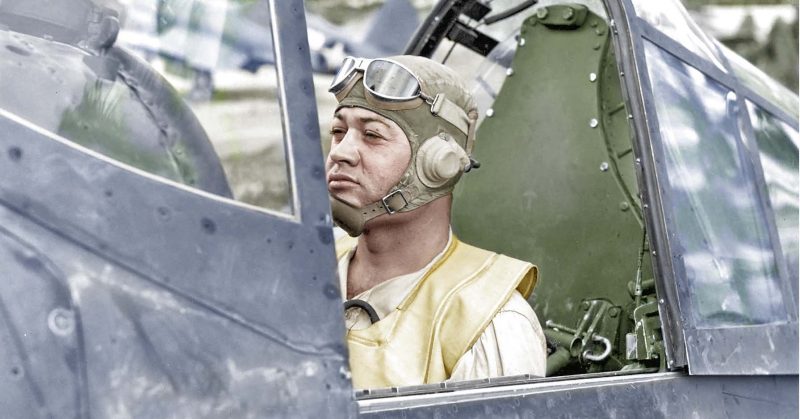FASCINATING pictures of America’s famous WWII Black Sheep Squadron whose efforts helped win the war in the Pacific have been released in vibrant color.
By Rebecca Drew and Michael D. Carroll
The incredible series shows the squadron’s commanding officer, Colonel Gregory ‘Pappy’ Boyington briefing his men on strategy and tactics before the October 17, 1943, attack on Kahili airdrome at Bougainville Island, Papua New Guinea. Pappy and 24 fighters circled the airfield where 60 enemy aircraft were based to goad them into attacking with a large force. In the ensuing air battle, 20 enemy aircraft were shot down while the Black Sheep (VMF-214) Squadron suffered no losses. Pappy was awarded the Medal of Honor and the Navy Cross.
One shot shows Pappy in the cockpit of his aircraft being interviewed on television at his homecoming. Another shows him reuniting with his Black Sheep colleagues, Chris Magee and Bill Case at a bar in San Francisco’s St. Francis Hotel after the war in late 1945.
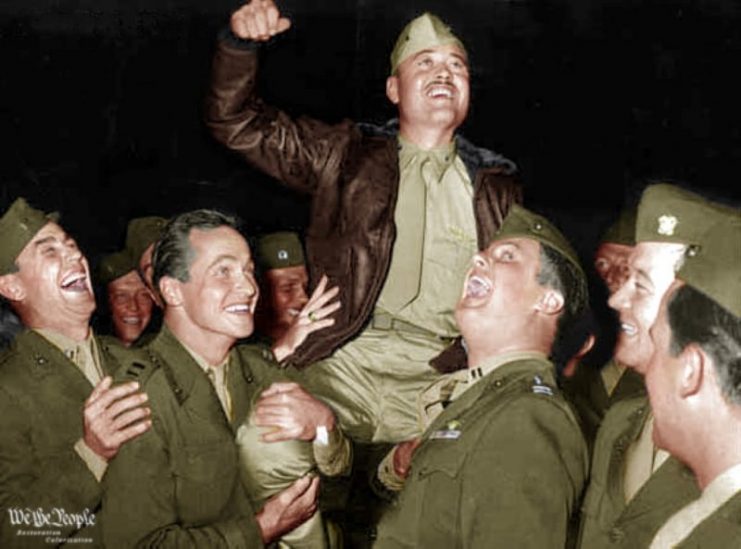
The pictures, most originally taken in the South Pacific between September 1943 and January 1944, were brought into the 21st century by colorist, Craig Kelsay (54) from Pearland, Texas, USA.
“The Black Sheep was a famous Squadron from WWII. When I was a kid, there was a fictional television show about the Squadron that I watched regularly. It made me curious about the real Black Sheep, and I found the true story much more compelling than the fictional story could ever be,” said Craig. “These are brave men who faced impossible odds to defend their nation and win the war in the Pacific. The founding members of VMF-214 were exceptional men who overcame incredible odds to become one of the best fighting squadrons of WWII.”
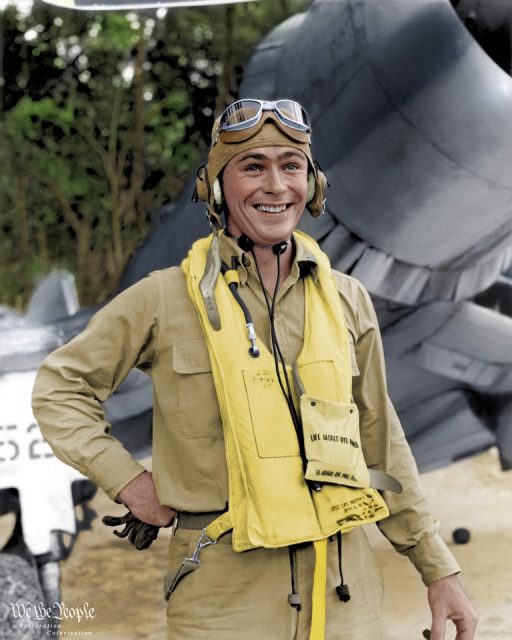
Theirs was a story much more interesting than the image created by the television show back in the 1970s. Many members of the Squadron hated the tv show because they felt that it made them out to be ridiculous misfits when in reality they were well-educated fighting Marines.
“I love that people can see the photos in a new light and learn about the real Black Sheep. I also love that many people feel it brings them closer to the history once they see what the photo looks like in color.”
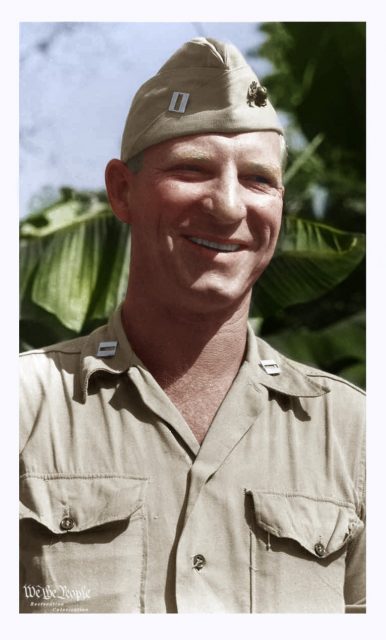
Marine Attack Squadron 214 (VMA-214) is better known as the Black Sheep Squadron of WWII and for one of its commanding officers, Colonel Gregory Boyington. He was sent to lead the Squadron in August 1943 after a successful tour in China where he had been credited with multiple kills of Japanese aircraft.
The Black Sheep Squadron fought for 84 days. They achieved a record of 203 Japanese planes destroyed or damaged, produced nine fighter aces with 97 confirmed air-to-air kills and sank several troop transporters and supply ships.
They were awarded the Presidential Unit Citation for extraordinary heroism in action. The Black Sheep ended their second combat tour on January 8, 1944, after Boyington was shot down and captured by the Japanese.
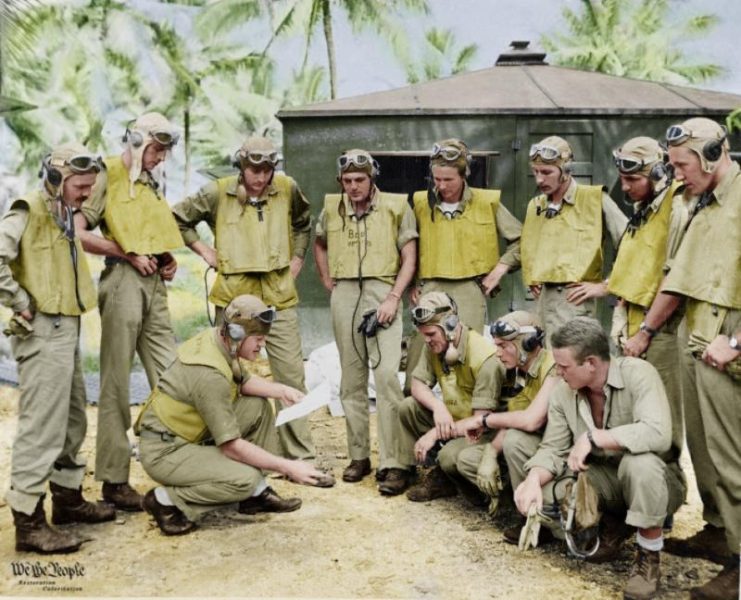
Craig explained how he first got involved in colorizing and what he loves the most about it:
“I got interested in photography and started using photoshop. I colorized a picture of my father from WWII and became obsessed with getting better at it and I am still working on getting better,” he said. “My favorite reaction is where people feel closer to the history because they feel the photo looks real. When family members look at them and feel closer to their loved ones, I feel that all the time is more than worth the effort.”
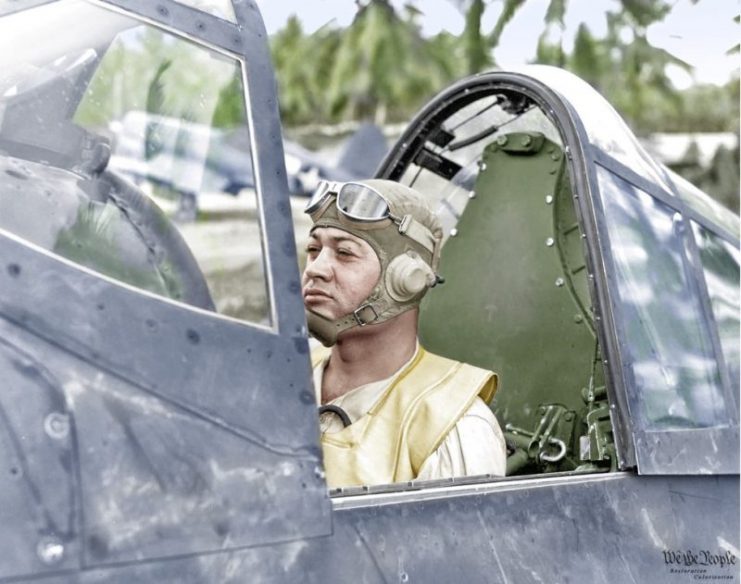
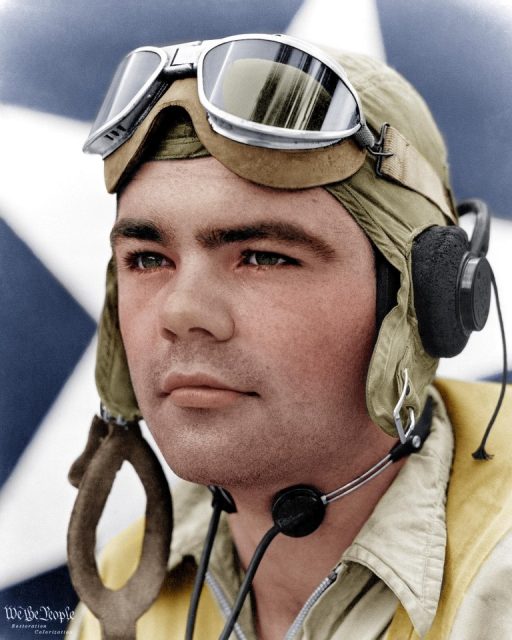
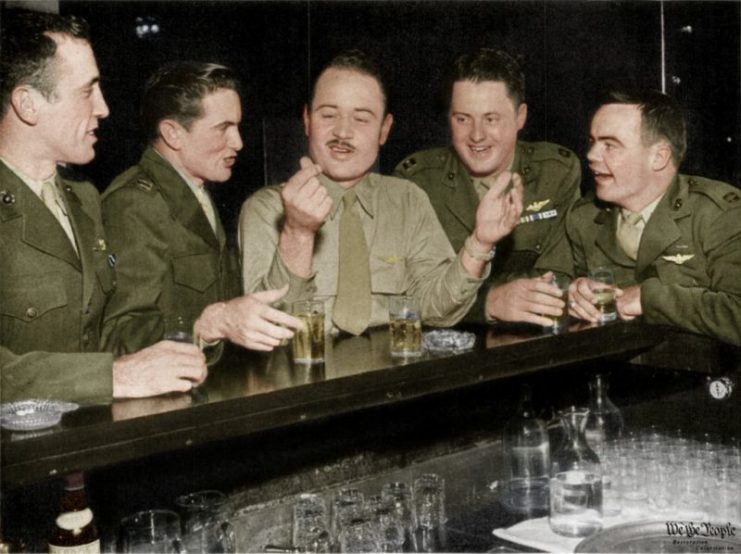
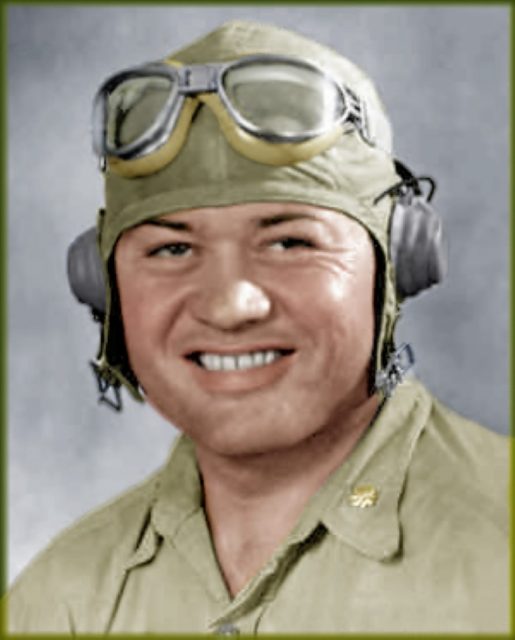
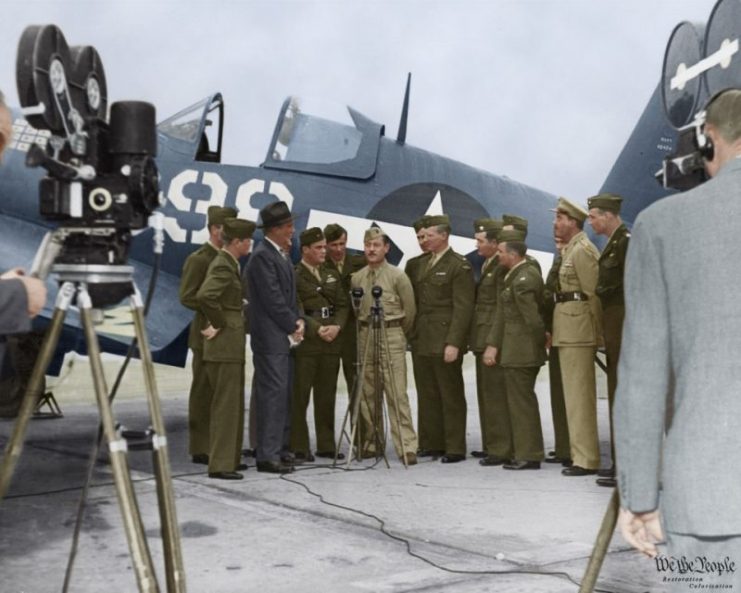
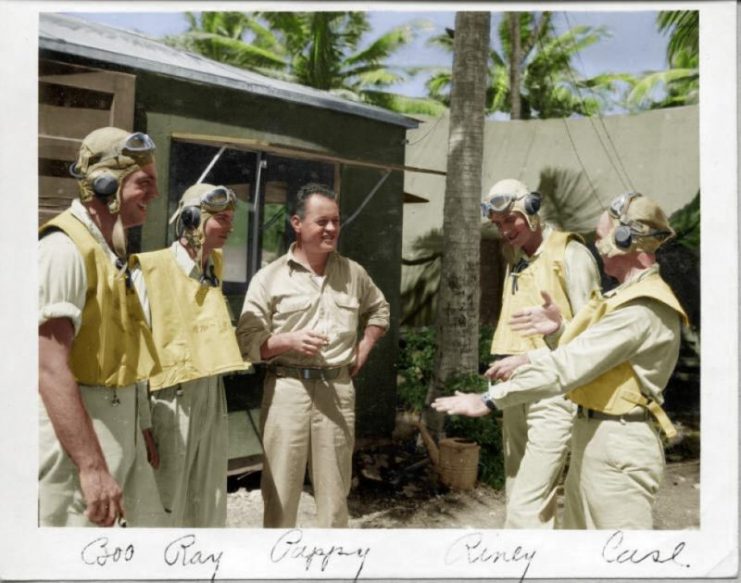
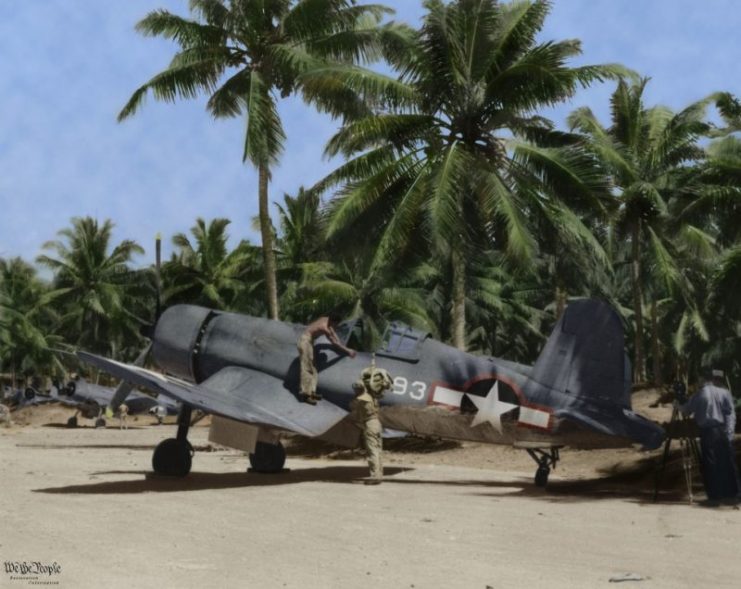
Striking images like these are featured in British author Michael D. Carroll’s new book, Retrographic on the coloring of historical photos.
More information on Amazon.
https://www.youtube.com/watch?v=dvvZZVPrkdY
